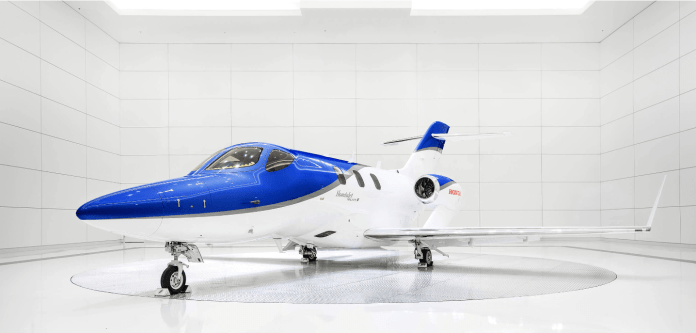When it comes to light business jets, the Honda Jet stands out with its innovative design and impressive performance. In this review, I will share my insights on the Honda Jet, focusing on its features, performance, and overall value. Whether you’re considering purchasing a private jet or just curious about this remarkable aircraft, I hope to provide you with a comprehensive overview.
Introduction to the Honda Jet
The Honda Jet is a unique entry in the world of light business aviation. Launched by Honda Aircraft Company, the jet has captured attention not only for its sleek design but also for its performance capabilities. With a combination of advanced technology and Honda’s engineering prowess, the Honda Jet promises an exceptional flying experience.
Design and Aesthetics
From the moment you lay eyes on the Honda Jet, its modern and aerodynamic shape makes a statement. The jet features a distinctive over-the-wing engine mount design, which not only enhances its aesthetic appeal but also contributes to improved fuel efficiency and noise reduction. The smooth lines and elegant curves are a testament to Honda’s commitment to both form and function.
Stepping inside the Honda Jet, I was pleasantly surprised by the spacious and well-appointed cabin. The interior design prioritizes passenger comfort, featuring customizable seating arrangements and high-quality materials. The cabin can accommodate up to six passengers, providing ample space for both work and relaxation. With large windows allowing for plenty of natural light, flying in the Honda Jet feels open and airy.
Performance: Speed and Efficiency
At the heart of the Honda Jet are two GE Honda HF120 turbofan engines. These engines are not only powerful but also fuel-efficient. During my flight experience, I noticed the smooth acceleration and quiet operation, which made for a pleasant journey. The Honda Jet boasts a maximum cruise speed of approximately 420 knots, making it competitive in its class.
One of the standout features of the Honda Jet is its impressive range. With a maximum range of about 1,200 nautical miles, it can easily cover distances between major cities without the need for refueling. This capability is especially beneficial for business travelers needing to reach multiple destinations in a short time frame. Additionally, the Honda Jet can operate at altitudes of up to 43,000 feet, allowing it to avoid much of the air traffic and turbulence that can affect lower-flying aircraft.
Technology and Innovation
The Honda Jet features a state-of-the-art cockpit equipped with the latest avionics technology. During my time in the cockpit, I found the layout to be intuitive and user-friendly. The touchscreen displays provide pilots with easy access to critical flight information, enhancing situational awareness. The Honda Jet also includes automated systems to assist with navigation and flight management, making it easier for pilots to focus on flying.
Safety Features
Safety is paramount in aviation, and the Honda Jet does not disappoint. It is equipped with a range of safety features, including an advanced autopilot system, terrain awareness and warning systems, and redundant systems to ensure reliability. The Honda Jet’s design also incorporates features that enhance stability and control, providing peace of mind for both pilots and passengers.
Cost of Ownership
The initial cost of acquiring a Honda Jet typically ranges from $4.5 million to $5 million, depending on the configuration and options selected. While this price point is competitive, it is essential to consider the overall value the Honda Jet offers in terms of performance and comfort.
Operating Costs
In addition to the purchase price, I evaluated the operating costs associated with the Honda Jet. The fuel efficiency of the HF120 engines helps keep operational costs relatively low compared to other jets in its class. Maintenance costs are also manageable, thanks to Honda’s commitment to quality and reliability.
Comparing the Honda Jet to Competitors
Cessna Citation M2
When comparing the Honda Jet to its closest competitor, the Cessna Citation M2, several differences emerge. While both jets offer similar seating capacities and performance, the Honda Jet’s unique design and advanced technology give it an edge in fuel efficiency and speed. The Citation M2, however, may be more familiar to some pilots due to its longer presence in the market.
Embraer Phenom 100E
Another competitor worth mentioning is the Embraer Phenom 100E. The Phenom 100E offers a slightly larger cabin and can accommodate more passengers, but the Honda Jet outperforms it in terms of speed and range. Ultimately, the choice between these aircraft will depend on individual preferences and specific needs.
Conclusion: Is the Honda Jet Worth It?
After thoroughly reviewing the Honda Jet’s features, performance, and overall value, I believe it offers a compelling option for those in the market for a light business jet. Its combination of innovative design, advanced technology, and comfort makes it a strong contender in its class. While the initial purchase price may seem steep, the long-term benefits in terms of fuel efficiency and operational costs can make it a wise investment.
If you’re contemplating a purchase, I recommend taking a test flight to experience the Honda Jet for yourself. The feeling of cruising at 43,000 feet, surrounded by luxury and advanced technology, is something every traveler should experience.
In conclusion, the Honda Jet represents a remarkable achievement in aviation engineering. Its unique design, exceptional performance, and commitment to passenger comfort make it a standout choice in the light jet market. Whether you’re a seasoned pilot or a first-time buyer, the Honda Jet is worth considering for your aviation needs.
For further information on the Honda Jet and the light jet market, check out resources from the National Business Aviation Association and other aviation industry experts.
<iframe width="560" height="315" src="https://www.youtube.com/embed/nCv8LcMzpzE?si=8HuMhSTq7X-ivc79" title="YouTube video player" frameborder="0" allow="accelerometer; autoplay; clipboard-write; encrypted-media; gyroscope; picture-in-picture; web-share" referrerpolicy="strict-origin-when-cross-origin" allowfullscreen></iframe>




.jpg?w=100&resize=100,70&ssl=1)
